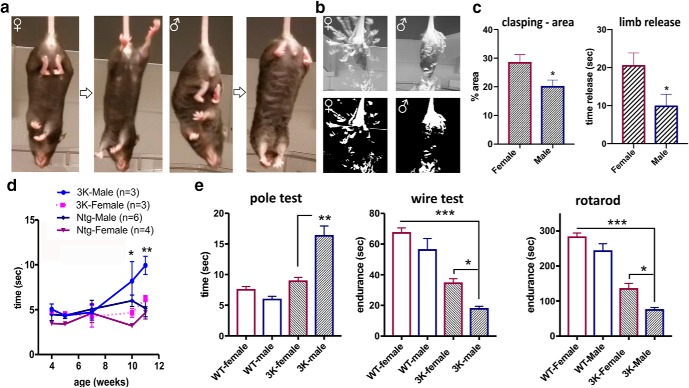Figure 1.
Sex differences of progressive motor deficits in 3K αS tg mice. a, Limb clasping in 3K female versus (vs.) 3K male αS tg mice at 6 months. b, Stacked images to assess rigor of limbs in 3K female and male mice at 6 months by videography and ImageJ software (representative images are shown). c, Quantification of time hindlimbs were released from the clasped (= flexed) position and of percentage area hindlimb coverage in b (see Materials and Methods) (n = 6 each group). d, Longitudinal quantification of time to descend the pole in mice 4–12 weeks of age. e, Left, Quantification of time to descend the pole for 6-month-old mice. Middle, Quantification of muscle tone-related endurance of 3K males and females in the 4-limb wire-hanging test. Right, Quantification of fine motor and balancing skills in a 4–40 rpm accelerating rotarod test. No significant behavioral impairments or sex-related changes are observed in age-matched WT controls. Data are mean ± SEM. *p < 0.05; **p < 0.01; ***p < 0.001; unpaired two-tailed t test (c); or two-way ANOVA post Tukey (d, e).

